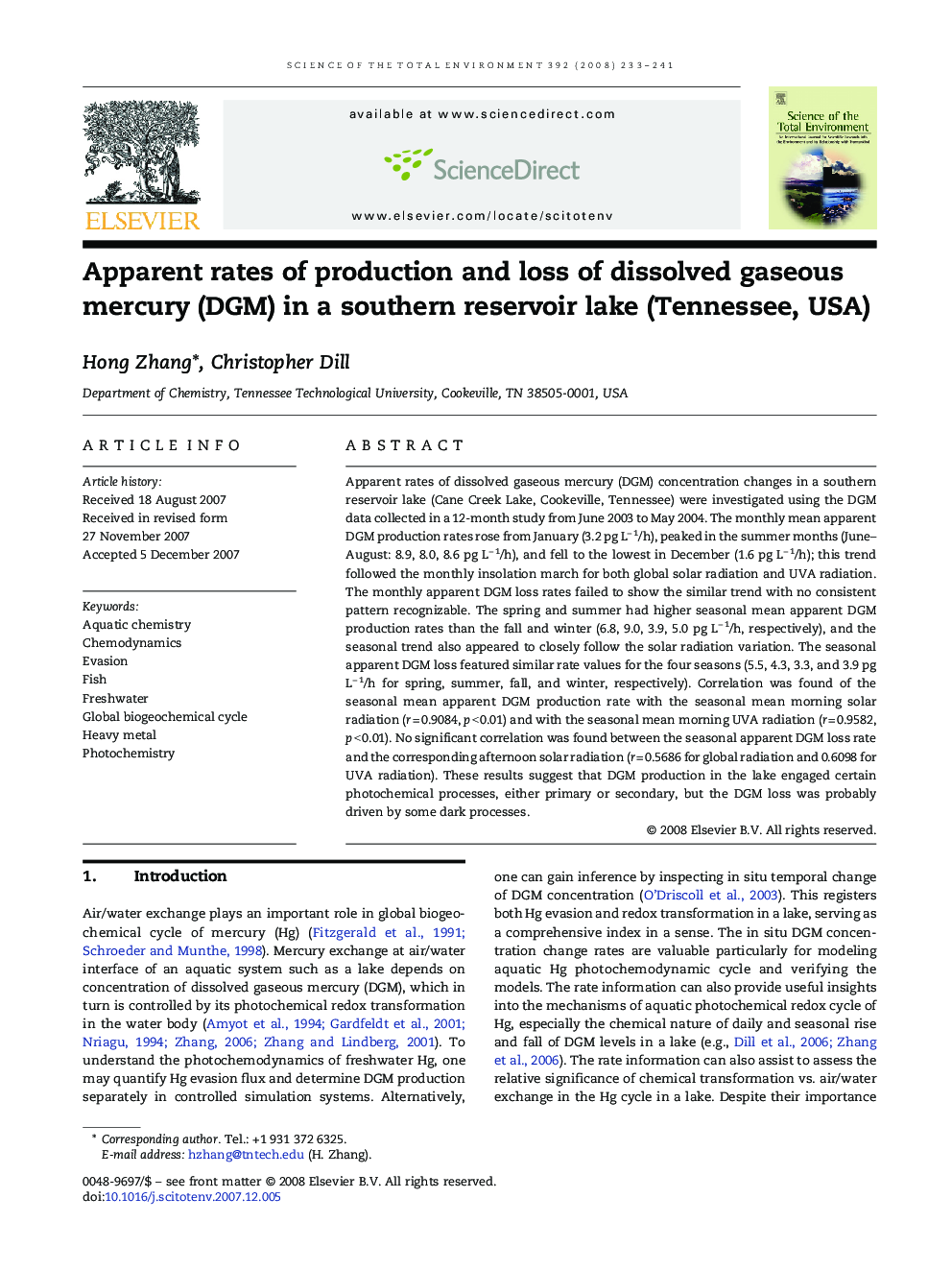| کد مقاله | کد نشریه | سال انتشار | مقاله انگلیسی | نسخه تمام متن |
|---|---|---|---|---|
| 4433087 | 1619931 | 2008 | 9 صفحه PDF | دانلود رایگان |

Apparent rates of dissolved gaseous mercury (DGM) concentration changes in a southern reservoir lake (Cane Creek Lake, Cookeville, Tennessee) were investigated using the DGM data collected in a 12-month study from June 2003 to May 2004. The monthly mean apparent DGM production rates rose from January (3.2 pg L− 1/h), peaked in the summer months (June–August: 8.9, 8.0, 8.6 pg L− 1/h), and fell to the lowest in December (1.6 pg L− 1/h); this trend followed the monthly insolation march for both global solar radiation and UVA radiation. The monthly apparent DGM loss rates failed to show the similar trend with no consistent pattern recognizable. The spring and summer had higher seasonal mean apparent DGM production rates than the fall and winter (6.8, 9.0, 3.9, 5.0 pg L− 1/h, respectively), and the seasonal trend also appeared to closely follow the solar radiation variation. The seasonal apparent DGM loss featured similar rate values for the four seasons (5.5, 4.3, 3.3, and 3.9 pg L− 1/h for spring, summer, fall, and winter, respectively). Correlation was found of the seasonal mean apparent DGM production rate with the seasonal mean morning solar radiation (r = 0.9084, p < 0.01) and with the seasonal mean morning UVA radiation (r = 0.9582, p < 0.01). No significant correlation was found between the seasonal apparent DGM loss rate and the corresponding afternoon solar radiation (r = 0.5686 for global radiation and 0.6098 for UVA radiation). These results suggest that DGM production in the lake engaged certain photochemical processes, either primary or secondary, but the DGM loss was probably driven by some dark processes.
Journal: Science of The Total Environment - Volume 392, Issues 2–3, 25 March 2008, Pages 233–241